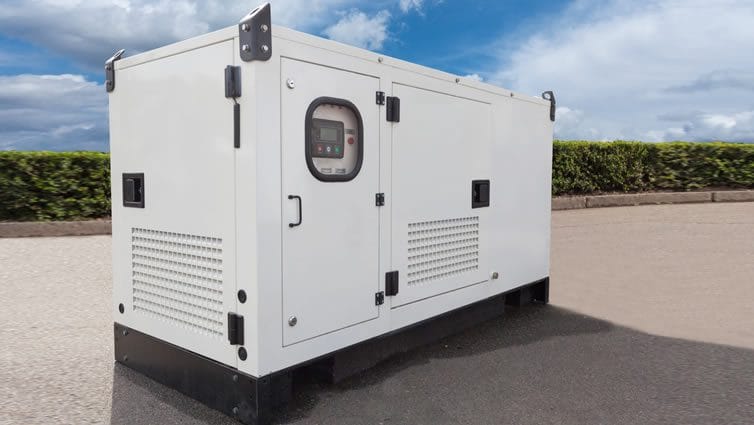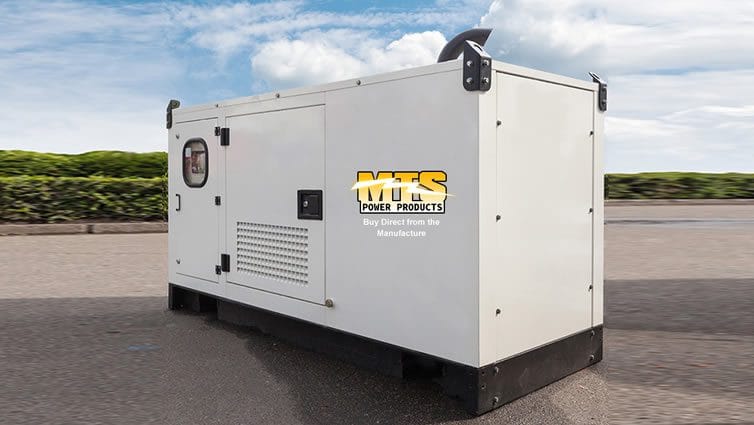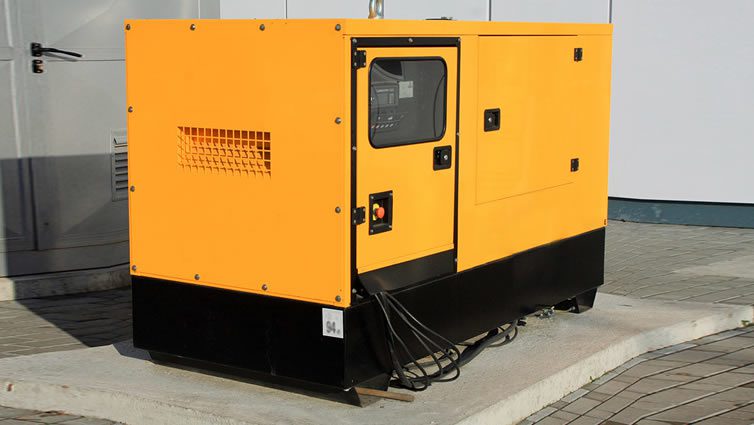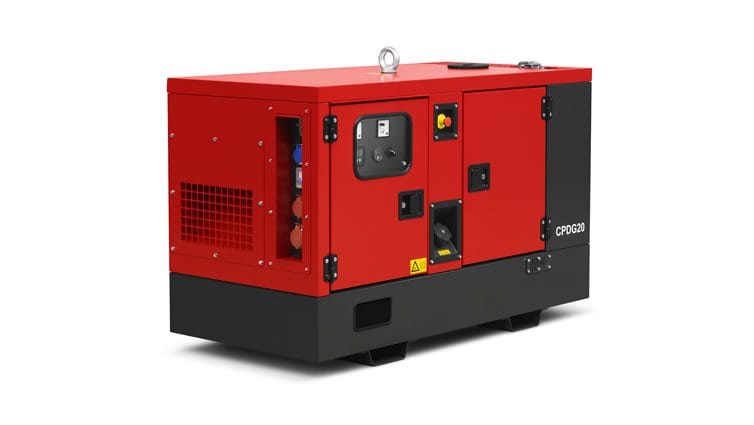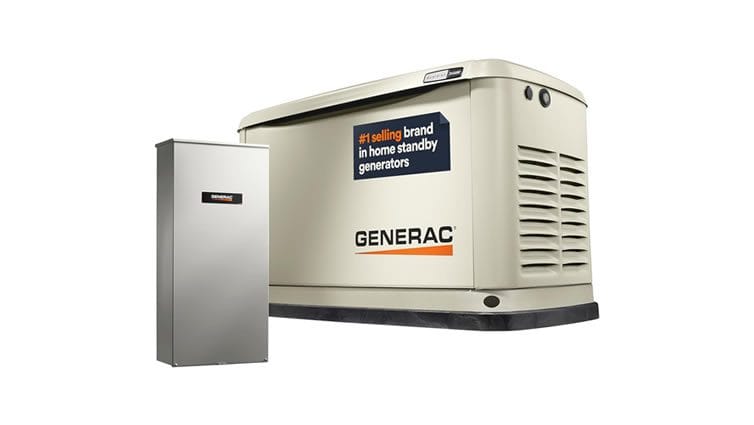Introducing some of the best best standby generator
Standby generators are essential for any homeowner seeking reliable backup power during outages. In an age where power interruptions can disrupt your daily life, having a dependable generator ensures that your home remains functional and comfortable. These generators automatically activate when the grid goes down, providing a seamless transition to backup power. In this article, we’ll introduce you to some of the best standby generators available on the market. We’ll highlight their unique features, benefits, and what sets them apart, helping you choose the ideal generator for your energy needs. Get ready to explore the top options for uninterrupted power supply!
Factors to Consider Before Buying a Standby Generator
Buying a standby generator is a significant decision, especially when you’re thinking about long-term convenience and safety for your home. Whether you’re preparing for unexpected outages or simply want the peace of mind that comes with knowing you’ll never be without power, there are several factors to keep in mind before making a purchase. Below, we’ll dive into the essential aspects that you need to consider when choosing the right standby generator for your home. By the end, you’ll be ready to confidently pick a generator that meets your needs!
1. Power Output: Size Matters!
One of the most important things to consider when buying a standby generator is its power output. You don’t want to end up with a generator that can barely keep your lights on, right? The size of your generator should match your power needs. Think about what you’ll need to run during an outage. Do you just want to keep essential appliances going like your fridge, or are you aiming to power your entire home, including heating and air conditioning?
For most homes, a standby generator in the range of 10,000 to 20,000 watts will be sufficient. But if you’re not sure, it’s always better to overestimate your power needs than underestimate them. The last thing you want is to be stuck in the middle of a blackout with a generator that’s struggling to keep up!
2. Fuel Type: What’s Your Preference?
Fuel type is another big factor when choosing a standby generator. There are several options available, with the most common being natural gas, propane, and diesel. Each comes with its pros and cons, so it really depends on what works best for you. Natural gas and propane are typically more convenient because they can be connected to existing gas lines, meaning you won’t need to worry about refueling. Diesel generators, on the other hand, tend to be more efficient but will require a fuel storage plan.
Think about availability in your area and your own comfort level. If your home already uses natural gas, it might be easier to go with a natural gas generator. On the flip side, if you live in a rural area where fuel delivery could be an issue, propane or diesel might be the better option for you.
3. Installation Location: Find the Perfect Spot
Now, let’s talk about where you’re going to put this generator! The location of installation is crucial not just for functionality but for safety as well. Standby generators need proper ventilation to avoid overheating and dangerous fumes like carbon monoxide. So, you can’t just tuck it away in a corner or next to your house without planning.
Your standby generator should be installed at least five feet away from any windows or doors. It should also be placed on a solid, level surface—preferably a concrete pad. You don’t want it sinking into the ground after a heavy rainstorm! Many homeowners opt to hire a professional to handle the installation since local regulations might require specific permits or adherence to building codes. Plus, it’s one less thing for you to worry about!
4. Transfer Switch: The Key to Seamless Power
A transfer switch is like the brain of your standby generator system. Without it, your generator won’t be able to automatically kick in when the power goes out. There are two main types of transfer switches: manual and automatic. For most homeowners, an automatic transfer switch is the way to go. This handy device will detect when there’s a power outage and switch your home’s electricity supply over to the generator without you having to lift a finger.
Manual transfer switches, on the other hand, require you to physically flip a switch when the power goes out. While this is more budget-friendly, it’s not exactly convenient if you’re away from home or sleeping when an outage happens. An automatic switch offers peace of mind knowing that your generator will jump into action, even if you’re not there to monitor it.
5. Budget: Don’t Forget About the Extras
It’s easy to focus just on the price of the standby generator itself, but don’t forget to account for the extras! Installation costs, transfer switches, fuel storage, and maintenance all add up. On average, a good standby generator will cost you between $3,000 and $5,000, but installation could tack on another couple of thousand dollars, depending on complexity.
Plus, once your generator is up and running, you’ll need to keep it maintained. Annual servicing will help extend its life and ensure it’s ready to go when you need it most. So, while the initial investment might seem steep, consider the long-term value of always having power during an emergency. It’s money well spent for peace of mind!
6. Noise Levels: Keep the Neighbors Happy
Standby generators aren’t known for being the quietest devices on the block. Noise levels can be a concern, especially if your generator is placed near bedrooms or neighbors. Modern generators tend to be quieter than their older counterparts, but it’s still something to keep in mind.
Look for models that specifically mention low noise output. Many newer generators come equipped with noise-reducing technology or sound-dampening enclosures, which make them more neighborhood-friendly. You can also install the generator in a soundproofed shed or behind a noise barrier if it’s too close to living spaces.By considering these key factors—power output, fuel type, location, transfer switch, budget, and noise levels—you’ll be in a great position to choose the best standby generator for your home. Just take your time, do your research, and soon you’ll have a reliable generator that will keep you powered up through any outage!
Understanding Wattage and Power Needs
When you’re considering a standby generator, one of the most crucial aspects to grasp is wattage. Understanding wattage and your power needs can make all the difference when the lights go out. You don’t want to end up in a blackout with a generator that can’t handle your essential appliances! So, let’s break down wattage in a fun and easy way, ensuring you’re well-prepared for your next generator purchase.
1. What is Wattage?
First things first: what is wattage? Wattage is simply a measure of electrical power. It tells you how much electricity an appliance or device requires to run. For instance, a light bulb may use 60 watts, while a refrigerator can use around 600 watts. When choosing a standby generator, you need to know how much wattage your critical appliances will require to function efficiently during an outage.
When your power goes out, the last thing you want to do is play guessing games. Knowing the wattage of your appliances allows you to select a generator that can meet your home’s specific needs. A well-sized generator means no more worrying about whether your fridge can keep your food cold, or your heater can keep you warm.
2. Starting vs. Running Wattage
Now that we know what wattage is, let’s dive into a critical distinction: starting versus running wattage. Most appliances have two wattage ratings: the starting wattage and the running wattage. The running wattage is what it takes to keep an appliance operating once it’s up and running. The starting wattage, on the other hand, is a burst of energy needed to kickstart the appliance when you first plug it in.
For example, a refrigerator might require 600 watts to run but may need 1,200 watts to start. If you plan to use several appliances simultaneously, you need to account for both types of wattage to avoid overloading your standby generator. If you don’t consider this, you might find your generator struggling to keep up with the demands, which is a situation you definitely want to avoid.
3. Calculating Your Power Needs
So, how do you calculate your power needs? It’s simpler than you might think! Start by listing all the appliances you want to run during an outage. This list might include your refrigerator, lights, heating or cooling systems, and essential electronics. Next to each item, jot down its running wattage.
Once you have your list, add up all the running wattages. Don’t forget to include the starting wattage of the appliances that require it. For example, if you want to run a refrigerator (600 watts), a few lights (200 watts), and a heater (1,500 watts), you would add these up. If the refrigerator needs 1,200 watts to start, that’s another consideration. This way, you’ll get a clear idea of how much wattage your standby generator needs to provide.
4. Choosing the Right Generator Size
After calculating your total wattage needs, you can start shopping for your standby generator. When looking at generator specifications, make sure to choose a generator that exceeds your calculated wattage needs. It’s generally recommended to select a generator that offers at least 20-25% more wattage than your total requirement. This extra capacity helps accommodate any fluctuations in power usage and ensures the generator operates smoothly.
For example, if your total wattage requirement is 2,500 watts, look for a generator that offers around 3,000 watts or more. This will provide a safety buffer, allowing you to run all your essential appliances without fear of overloading your generator. Remember, it’s always better to have a little extra power than to find yourself in a bind when you need it most!
5. Understanding Your Utility Costs
When considering wattage and power needs, it’s also important to think about utility costs. Different generators will consume different amounts of fuel based on their wattage output. Higher wattage can mean higher fuel consumption, so understanding your generator’s efficiency can save you money in the long run.
If you want to keep your costs down, look for a generator that’s not only capable of meeting your wattage requirements but also operates efficiently. Some generators feature eco-mode settings that help minimize fuel consumption while running, which is a fantastic way to save money on fuel costs. So, when evaluating your options, keep an eye on how efficiently each generator converts fuel into usable power!
6. Future-Proofing Your Generator
Finally, when choosing a standby generator, consider your future power needs. Will you be adding more appliances or making changes to your home that may require additional power? Thinking ahead can save you the hassle of having to upgrade your generator sooner than expected.
If you plan on expanding your home, investing in high-wattage devices, or simply want the peace of mind that comes with having ample power, opt for a generator that can grow with your needs. It may cost more upfront, but having that extra capacity will be worth it when the next power outage strikes! Understanding wattage and your power needs is a critical part of choosing the right standby generator. By knowing the difference between running and starting wattage, calculating your total power needs, and selecting the right generator size, you can ensure that you’re prepared for any blackout. Just remember: a little planning today can save you a lot of worry tomorrow!
The Importance of Generator Size and Location
When it comes to purchasing a standby generator, two key factors can make or break your experience: size and location. Choosing the right generator size ensures you have enough power to run your essential appliances, while the installation location affects its efficiency and safety. Let’s dive into why these aspects are so crucial and how to get them right for your home.
1. Why Size Matters
Selecting the right size for your standby generator is crucial. If you opt for a generator that’s too small, you risk not being able to power everything you need during an outage. Imagine a summer storm knocking out your electricity while your air conditioner struggles to stay cool! On the flip side, purchasing a generator that’s too large can lead to unnecessary costs. Larger generators not only cost more upfront but may also consume more fuel when running.
So, how do you determine the right size? Start by making a list of the appliances you want to keep running during a power outage. Each appliance will have a wattage requirement, which you can usually find on the appliance label. Add up these wattages to get a total. Don’t forget to include starting wattages for devices that need extra power when they kick on. By calculating your power needs accurately, you can choose a standby generator that meets your requirements without breaking the bank.
2. Understanding Load Management
When discussing the importance of generator size, it’s also essential to understand load management. This concept refers to how much power you’ll need to manage during a power outage. For example, if you plan to run your refrigerator, lights, and heating system, that’s a lot of demand on your generator.
Many homeowners make the mistake of not considering their peak load. If too many appliances are running simultaneously, your generator may become overloaded, leading to potential damage. Therefore, a well-sized standby generator will allow you to manage your power load efficiently without risking equipment failure. It’s all about balance; knowing how much power you need and how to distribute it effectively can make your life a lot easier during an outage.
3. Choosing the Right Location
Now that you’ve figured out the size of your standby generator, it’s time to think about where to place it. The location is just as vital as size and can significantly impact the generator’s performance and safety. Generators need proper ventilation to operate effectively, which is why placement matters.
You want to install your generator at least five feet away from windows, doors, and vents. This distance helps keep harmful exhaust fumes from entering your home, ensuring you and your family stay safe. Plus, keeping it at a safe distance minimizes noise disruption. Most generators can be noisy, so placing it in an area away from living spaces will help maintain your peace and quiet.
4. Surface Stability
In addition to ventilation, the surface on which you place your standby generator is critical. It should be on a flat and stable surface to prevent it from tipping or shifting during operation. Many homeowners choose to set their generators on a concrete pad for added stability. This also helps prevent flooding during heavy rain, keeping your generator dry and functional when you need it most.
If you live in an area prone to severe weather, this consideration becomes even more vital. Having your generator on a solid surface ensures that it will perform reliably, regardless of the external conditions. Plus, it’s easier to maintain and service when it’s situated correctly!
5. Access and Maintenance Considerations
Lastly, don’t forget about accessibility. You want to ensure that your standby generator is easily accessible for maintenance and refueling. Placing it in a hard-to-reach spot can lead to headaches down the line. You should be able to quickly reach the generator for routine checks and any necessary repairs.
Think about how often you’ll need to access it and ensure that you can do so without hassle. This consideration will help extend the life of your generator and keep it in top shape. If you neglect maintenance due to inaccessibility, you may find yourself in a tricky situation when the power goes out.
6. Following Local Codes and Regulations
Finally, always check your local building codes and regulations regarding generator installation. Some areas have specific requirements for the placement of standby generators, such as distance from property lines or noise restrictions. By adhering to these guidelines, you’ll ensure that your installation is both legal and safe. It’s a small step that can save you a lot of trouble down the road.
In summary, understanding the importance of generator size and location is crucial when investing in a standby generator. By carefully assessing your power needs, managing loads, and choosing the right spot for installation, you can ensure your generator runs efficiently and safely. Remember, a little planning goes a long way, and with the right generator setup, you’ll be well-prepared for any power outage that comes your way!
Comparing Fuel Options for Standby Generators
When it comes to standby generators, choosing the right fuel type is crucial. The fuel you select affects everything from performance to convenience. With several options available, each with its advantages and disadvantages, it’s essential to understand what suits your needs best. Let’s break down the most common fuel options for standby generators so you can make an informed choice!
1. Gasoline: The Everyday Hero
Gasoline is one of the most commonly used fuels for standby generators. It’s readily available at most gas stations, making it an accessible choice. If you already have a gas-powered vehicle, using gasoline for your generator might be a no-brainer.
However, gasoline does come with its drawbacks. It has a shorter shelf life than other fuels, typically lasting only a few months before it starts to degrade. This can lead to problems if you need to use your generator during an extended outage. Additionally, storing gasoline safely can be a challenge. You’ll need to invest in proper containers and ensure you store it away from heat sources.
2. Propane: The Clean and Convenient Option
Propane is another popular fuel choice for standby generators. It burns cleanly and produces fewer emissions than gasoline, making it an environmentally friendly option. Plus, propane can be stored for long periods without degrading, giving you peace of mind during an outage.
One of the significant benefits of propane is its versatility. You can use it for various appliances beyond just your generator, like grills or heaters. This can make it easier to stock up on fuel and streamline your energy needs. However, you will need a propane tank, which requires proper installation and maintenance. This may add to your initial setup costs.
3. Natural Gas: The Home Run
Natural gas is a fantastic choice if you have a gas line running to your home. Using natural gas for your standby generator can be extremely convenient because it’s always available when you need it. You won’t have to worry about running out of fuel during an outage!
Another perk of natural gas is that it’s usually less expensive than gasoline or propane. You’ll save money in the long run, making it an attractive option. However, it’s important to note that natural gas generators may not work during a widespread outage that affects the gas supply. In these situations, having an alternative fuel source can be a lifesaver.
4. Diesel: The Heavy-Duty Workhorse
Diesel fuel is often found in larger, industrial-grade standby generators. It’s known for its efficiency and longevity, making it an excellent choice for those who need a reliable power source during extended outages. Diesel generators typically offer longer runtimes, which means you can keep your appliances running without frequent refueling.
While diesel can be more expensive than gasoline or propane, it often pays off in performance. Diesel engines are usually more robust and require less maintenance than their gasoline counterparts. However, the noise level can be a downside, as diesel generators can be louder than other types.
5. Comparing Efficiency and Runtime
When comparing fuel options, efficiency and runtime are essential considerations. Gasoline generators tend to be less fuel-efficient, especially when running at high loads. In contrast, diesel generators offer better fuel economy and longer runtimes. If you anticipate needing power for several days, a diesel generator may be your best bet.
Propane and natural gas also provide good efficiency. Natural gas is particularly appealing because it’s continuously supplied. Propane, while efficient, requires storage and careful management, but it remains an excellent choice for reliability and convenience.
6. Safety and Storage Considerations
Safety is a critical factor when it comes to choosing a fuel type for your standby generator. Each fuel option has its safety considerations. Gasoline is flammable and requires careful storage. Propane tanks must be handled with care, and natural gas requires proper installation to avoid leaks. Diesel is safer in terms of flammability but can pose risks due to its heavier fumes.
When selecting a fuel type, consider how much space you have for storage and your local regulations. Understanding the safety protocols for each fuel type ensures you can use your generator confidently.
7. Making the Right Choice for You
Choosing the right fuel for your standby generator ultimately depends on your unique needs. If you prioritize convenience and cleanliness, propane or natural gas may be the best fit. However, if you’re looking for power and longevity, diesel could be the way to go. Gasoline remains a practical choice if you prefer something familiar and easily accessible.
Take the time to evaluate how you plan to use your generator, your budget, and your storage capabilities. By doing so, you’ll be well-equipped to make the right decision and ensure you have the fuel you need when the power goes out. In summary, comparing fuel options for your standby generator is an essential part of the purchasing process. Each fuel type has its pros and cons, so understanding what works best for your situation is crucial. With a bit of research and consideration, you can find the perfect fuel solution to keep your home powered during an outage. Stay prepared and keep the lights on, no matter what!
Our Recommendation: Generac 7210 24kW Air Cooled Guardian Series
For homeowners seeking reliable, long-term backup power, the Generac 7210 24kW Air Cooled Guardian Series Home Standby Generator is a standout option. This powerful generator offers advanced features designed to keep your home running smoothly during any power outage.
- Comprehensive Protection: With 24kW of power, this model can easily manage the energy demands of larger homes. Whether you need to power your HVAC system, appliances, or essential electronics, the Generac 7210 ensures everything stays operational when the grid fails.
- Smart Controls: Equipped with Generac’s Evolution Controller, you get detailed information at your fingertips, including real-time updates on generator status, maintenance reminders, and more. The user-friendly interface is perfect for those who want easy control without technical hassles.
- Versatile Power: This generator isn’t just powerful, it’s versatile. Whether you experience short outages or prolonged blackouts, the 7210 is designed to deliver consistent power. Its ability to support both essential circuits and full home protection makes it ideal for different backup needs.
- Wi-Fi Connectivity: The Mobile Link™ Wi-Fi feature allows you to monitor your generator remotely through any smart device. You can check on its status, get alerts, and even set up maintenance notifications, all from your phone or tablet, giving you peace of mind even when you’re away from home.
- Durable and Stylish: The bisque finish adds a touch of style to this robust unit, allowing it to blend seamlessly with your home’s exterior. More importantly, the durable design ensures it can withstand tough weather conditions, keeping it running when you need it most.
- 200-Amp Transfer Switch: Included with the Generac 7210, this 200-Amp Transfer Switch guarantees an automatic and smooth transition from grid to backup power. You won’t have to lift a finger—your home will switch to generator power the moment an outage strikes.
With these features, the Generac 7210 24kW Air Cooled Guardian Series is an all-in-one solution for those who need reliable and advanced backup power with modern controls. It’s the perfect balance of performance, convenience, and smart functionality, making it one of the best options for homeowners today.

